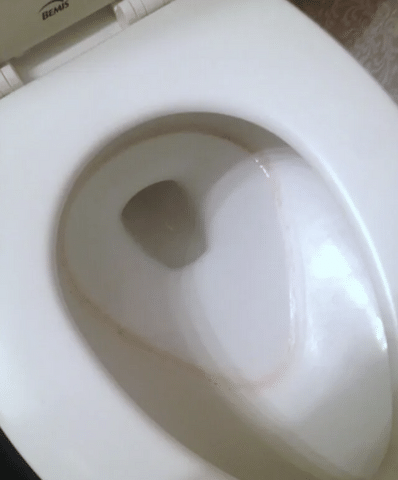Why You're Seeing Pink or Black Buildup Around Your Water Fixtures in Ohio
Homeowners across Ohio often notice a pink or black film forming around sinks, toilets, or showers and assume there’s a problem with their water. While it looks unpleasant, the truth is that this discoloration isn’t a water quality issue at all—it’s actually an airborne bacteria or mold problem, not something caused by your water or water treatment system.

What Causes the Pink or Black Buildup?
The pink or black film that commonly appears around toilets, showers, and sinks is caused by a naturally occurring airborne bacteria called Serratia marcescens. This bacteria thrives in damp environments and feeds on soap residue, toothpaste, and other organic materials that accumulate on wet surfaces.
While less common, it could also be due to airborne mold or mildew spores that have landed on damp areas and begun to grow. In some cases, the black color can also come from mineral oxidation (like iron or manganese), but most often it’s air-related rather than something in the water.

Why It’s Not a Water Problem
While it shows up near water, this buildup doesn’t originate in your plumbing or your water softener. Serratia marcescens and mold spores are present in the air all around us. When they settle on damp surfaces—especially where moisture lingers—they begin to grow. Common places people see this are in dishwashers, showers, toilets and sinks where water can sit for a prolonged period of time.
It’s important to understand that water treatment systems don’t cause this issue, and they can’t prevent it, because the bacteria and spores come from the air, not the water. However, a well-maintained plumbing system and clean water fixtures can make it harder for the buildup to stick and spread.
How to Prevent and Remove Pink or Black Buildup
While this discoloration isn’t harmful to healthy individuals, it can be unsightly and annoying. Fortunately, there are several steps you can take to reduce and prevent it:
-
Improve ventilation. Use exhaust fans or open windows during and after showers to reduce humidity that allows bacteria and mold (less likely)to thrive.
-
Clean regularly. Wipe down wet surfaces and scrub problem areas weekly using a mild bleach solution, vinegar, or a bathroom cleaner designed to remove biofilm.
-
Dry surfaces when possible. Keeping toilets, sinks, and tile areas dry after use helps prevent the moisture these microbes need to grow.
-
Check for leaks. Fix dripping faucets, running toilets, or areas of condensation that keep surfaces continuously damp.
-
Replace caulk or grout if needed. If buildup keeps returning, remove and replace old caulk or grout that may be harboring bacteria or mold. Serratia marcescens loves hiding in caulk and grout since it's hard to reach.

Is the Buildup Harmful?
For most Ohio homeowners, this pink or black residue is a cosmetic and maintenance concern, not a health threat. It’s generally harmless to healthy individuals but can pose a mild risk to people with compromised immune systems if left uncleaned. Regular cleaning and good ventilation will keep it under control.
The Bottom Line for Ohio Homeowners
If you notice pink or black buildup near your water fixtures, rest assured that it’s not coming from your water. It’s an air-quality and moisture issue that can be managed through proper cleaning and ventilation. Water treatment systems like softeners, filters, or reverse osmosis units won’t cause or fix this, but they remain important for addressing real water quality concerns such as hardness, iron, chlorine, or contaminants.
At Clean Water Ohio, we believe in helping homeowners understand the difference between water problems and environmental ones so you can make the right decisions for your home. If you’d like a free water test to confirm that your water isn’t contributing to stains or residue, our local experts are happy to help.

